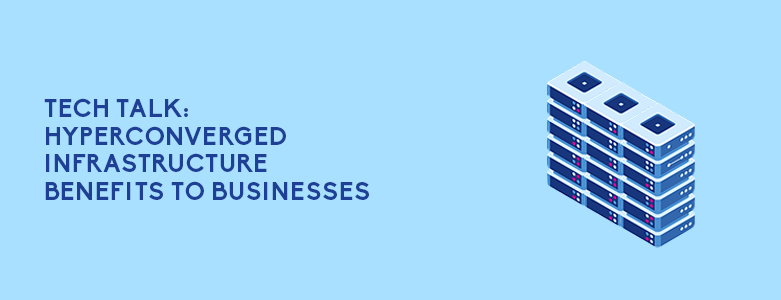
Today’s technologies are enabling companies to operate their business in ways that would not have been possible a few years back. This, however, has created a lot more complexity within the traditional infrastructure and can drive the costs higher if not addressed. If your business has been experiencing this very issue, you might have come across the term Hyperconverged Infrastructure or HCI. But what exactly is HCI and how can it help your business?
What is HCI?
To know what HCI is, lets step back and first go through what we are familiar with, the traditional model of infrastructure. The traditional model uses three proprietary purpose-built hardware for computing, storage, and networking. They are separate from one another and usually have specialists from IT handling each aspect. The benefit of this is you can independently add-on per component when you need to scale without interrupting your business environment and applications requirements are easier to meet. However, the downsides are that it takes more space physically, businesses need to allocate more manpower, and costs can become cumbersome.
A converged infrastructure improves on the traditional model to address its shortcomings. By bringing all three components into one rack, you are able to monitor and control all three in a single window. Saving you physical space and the need for more manpower. However, since all three components are now in a single rack, it is not as easy to alter it when needed. A huge loss to the businesses ability to be flexible.
This is where HCI comes in to solve these problems. Instead of placing the three main components into one rack, it places onto one industry-standard x86 server. A hypervisor is used to manage all the servers used to create a cluster that governs your IT environment. Software-defined storage is also usually used to create an inexpensive way to manage storage throughout the cluster. It uses the local disks of the servers and allocates data throughout the cluster. This is a key method on how scaling is easily done in an HCI setup.
HCI Benefits for Businesses
Simplicity – HCI frameworks are simple to manage and easy to deploy due to its node-based approach. Compared to the traditional model which can become complex as it is expanded with new applications and services. The unified and virtualized nature of HCI makes it simple to expand and to manage.
Cost Management – HCI environments costs are wholly dependent on your IT Teams. Convergence can also help reduce the time and cost required for software upgrades and hardware replacement due to built-in failover capabilities.
Scalability – You can think of HCI nodes as preconfigured building blocks. These blocks can be used by your IT team to easily scale resources up or down at anytime with little effort. However, there are limits to the number of nodes that can be added per cluster, and it needs to be in specific increments. The cloud may be able to scale indefinitely, but this also can lead to increased complexity.
Speed – HCI’s node based approached can significantly increase the deployment speed regardless of resource type. From storage to computing, networking or security, additional solutions can be integrated at anytime without the fear operational conflict with one another.
To learn more about HCI’s capabilities and benefits to your business, you can contact through marketing@www.ctlink.com.ph to learn more!

